#Cemetery | Parish Church
Text

Ships that stopped at Whitby Harbor (Seen here circa 1880) inspired Bram Stoker as he wrote Dracula. Photograph By Frank Meadow Sutcliffe, The Royal Photographic Society Collection/Victoria and Albert Museum, London/Getty Images
The Little-Known Shipwreck That Inspired Bram Stoker’s ‘Dracula’
Stoker was moved by grim details from the world around him while penning his horror masterpiece. The real fate of a ship called the Dmitry played an outsized role in his imaginings.
— By Melissa Sartore | August 18, 2023
The arrival of the Demeter in Bram Stoker's Dracula serves as a fundamental part of the titular character's story: the ship brings death himself to England.
Stoker drew inspiration for his genre-defining horror novel from his time in Whitby, and the dark 1885 fate of the real ship Dmitry on the town’s shore.
The death and tragedy around Stoker ultimately shaped the story that became one of the most famous pieces of English literature and set the stage for the next century of vampire lore.

The wreck of the Dmitry from Narva, now Estonia, aground on Tate Hill Beach in 1885, Whitby, Yorkshire, UK. Photograph By Frank Meadow Sutcliffe, Colin Waters/Alamy Stock Photo
The Dmitry Becomes the Demeter
During the summer of 1890, Irish novelist Bram Stoker vacationed at the seaside town of Whitby in northeast England. Despite spending only a month in the town, Stoker was enthralled by his surroundings: Grand Mansions and Hotels lined the West Cliff while remains of the seventh century Whitby Abbey towered over the East Cliff. Nearby, the cemetery at the Parish Church also served as inspiration as the story of Dracula came to life.
Stoker was also enchanted by the many ships making harbor here. He reportedly visited the Whitby Museum to explore the history of these vessels, as well as a local library, where he came upon William Wilkinson’s book The Accounts of Principalities of Wallachia and Moldova. Stoker marked in his notes:
DRACULA in the Wallachian language means DEVIL. The Wallachians were, at that time, as they are at present, used to give this as a surname to any person who rendered himself conspicuous either by courage, cruel actions, or cunning.
Stoker reportedly asked around the shore about shipwrecks in Whitby, notably the Dmitry, a ship that had wrecked five years earlier.
The cargo vessel Dmitry had set sail from Narva in Russia (modern-day Estonia) in 1885. On October 24, the Dmitry was one of two ships run ashore at Whitby by “a storm of great violence,” according to contemporary newspaper accounts. The other vessel, the Mary and Agnes, was stranded in the raging sea and a lifeboat was sent to rescue its crew. When the crew of the Mary and Agnes was ferried to the shore, per the Leeds Mercury, “their safe landing [was] the signal for loud huzzas by the thousands of people assembled on shore.”
Those same onlookers watched on to see what would happen with the Dmitry. As reported by the North-Eastern Daily Gazette, the crew remained on board in the hopes they would be able to dock, but “the sea beat savagely against the vessel. Her masts gave way and fell with a crash over her side, and the vessel herself began to break up.”
Though unclear exactly how they were rescued, in the end, all seven members of the Dmitry’s crew were safely brought to shore.
There were several unique aspects to the last voyage of the Dmitry that appear to have stood out to Stoker. The Demeter originated in Varna (an anagram for Narva, where the Dmitry originated), and similarly carried “ballast of silver sand, with only a small amount of cargo—a number of great wooden boxes filled with mould.”
Through conversations with fishermen in Whitby, Stoker learned of an untold number of local deaths at sea. Stoker reportedly made note of some 90 names from gravestones in Whitby for future use in his story, including the surname “Swales.” Soon after the arrival of the Demeter in Dracula, he wrote “Mr. Swales was found dead… his neck being broken.”
What Inspired Dracula’s Canine Form?
In Stoker’s novel, Dracula himself took the form of a dog to make his way from the Demeter to dry land, but there was no dog reported to have been on the Dmitry. According to Mel Ni Mhaolanfaidh and Marlon McGarry in 2021, the dog in Dracula may be an homage to the wreck of the Greyhound in 1770.
The Greyhound sailed from Whitby and sank off the coast of Ireland on December 12, 1770 (120 years prior to Stoker’s arrival in the town). Stoker’s mother, Charlotte, was from Sligo, a town in close proximity to the wreck. When the storm that sank the ship surged again, a young cabin boy was left stranded. The rescue effort failed, with only one out of the some 20 men sent to save him tragically dying in the process.
Stoker made no reference to a dog in his notes until two months after he’d departed from Whitby. On October 15, 1890, Stoker wrote, “When ship ran in to Collier's Hope, big dog jumped off bow & ran over pier - up Kiln Yard & church steps & into churchyard…Local dog found ripped open & graves torn up…” It’s not clear if Stoker learned of these details from the Dmitry wreck, another Whitby wreck, or was his own creation.
In the novel, the arrival of the Demeter was paired with a similarly remarkable incident: “The very instant the shore was touched, an immense dog sprang up on deck from below, as if shot up by the concussion, and running forward, jumped from the bow on the sand.”
The dog, a disguised Dracula, wrought bloodshed and death from that point forward. This dog resembled the barghest, a mythical monster often associated with Yorkshire. Spellings and specific forms of barghest vary but the dog-like being foretold of pain, disaster, or even death to all who saw it. The barghest also elicited howling from dogs in its vicinity, something Dracula protagonist Mina Murray reported took place soon after the arrival of the Demeter.
#Dracula#Whitby Harbor | Yorkshire | UK 🇬🇧#Frank Meadow Sutcliffe#Bram Stoker#Shipwreck#Horror Masterpiece#Northeast England 🏴#Grand Mansions | Hotels | West Cliff#Cemetery | Parish Church#Whitby Museum#William Wilkinson#The Accounts of Principalities of Wallachia and Moldova 🇲🇩#Cargo Vessel Dmitry#Narva in Russia 🇷🇺 | Modern-Day Estonia 🇪🇪#The Mary & Agnes#North-Eastern Daily Gazette#Mr. Swales#Mel Ni Mhaolanfaidh | Marlon McGarry#Greyhound#Charlotte | Sligo#Collier's Hope#Mina Murray | Dracula Protagonist
15 notes
·
View notes
Text
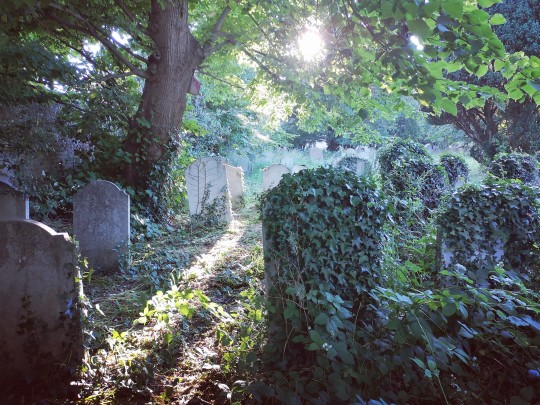
584 notes
·
View notes
Text
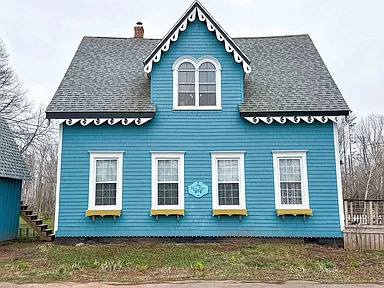
This home looks like a country cottage, so I was not prepared for the interior. It was built in 1830 in Charlotte Parish, Prince Edward Island, Canada. 4bds, 3ba, C$649K.
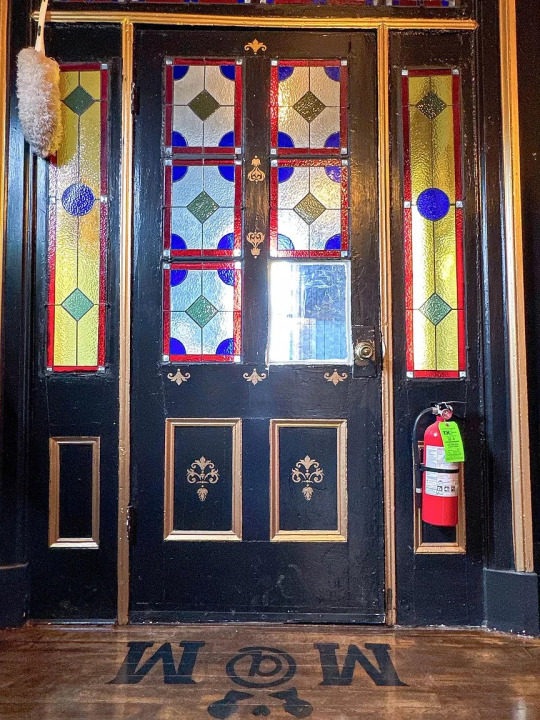
The entrance door is black with gold accents and it's not the typical country house door.
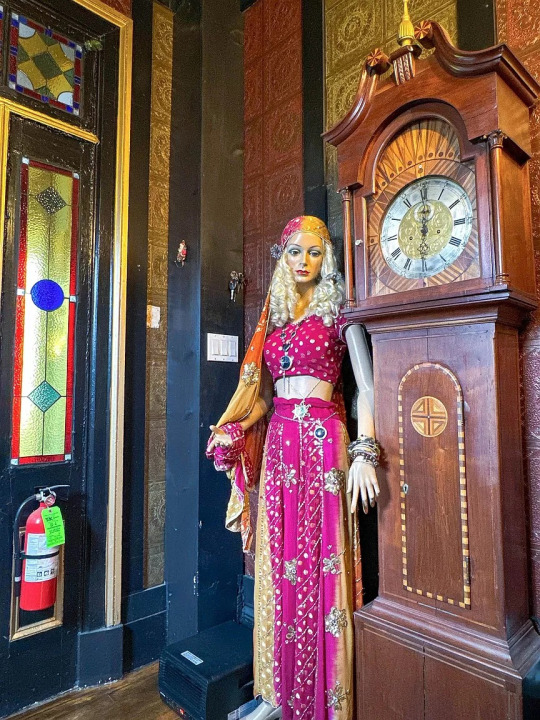
I didn't expect to be greeted by a mannequin.
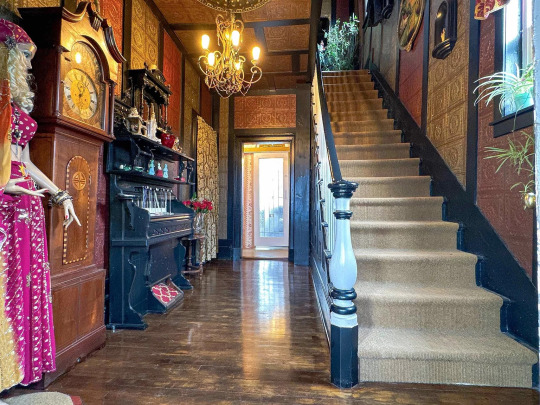
The hall is typically Victorian, but the decor is so interesting.
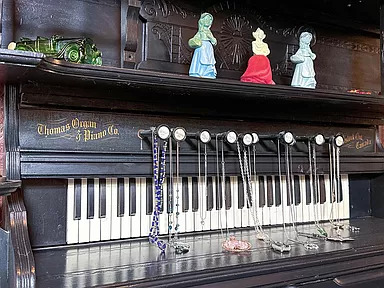
Great antique organ. I expect that the keyboard comes down- how can you play it like that?

Guest powder room.

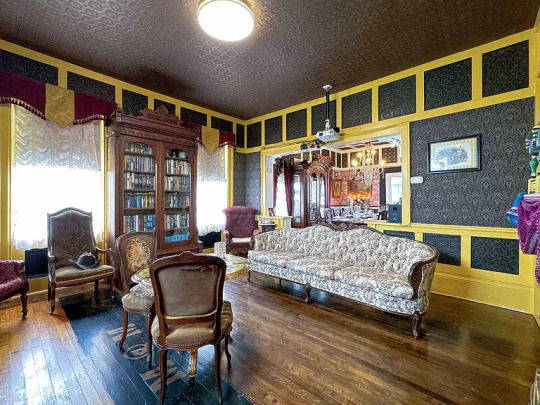
Wow, look at the sitting room. Looks like it's sunken- there are 2 steps on the right.

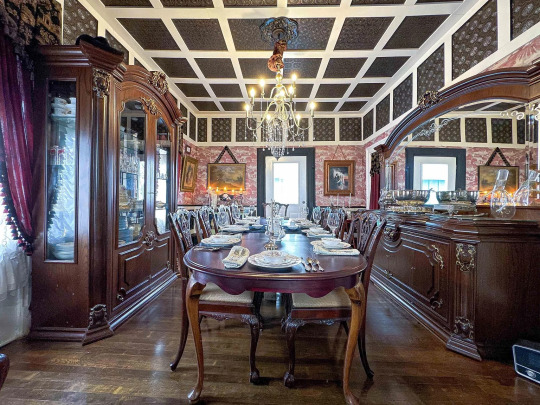
I like the dining room. It's incredibly elegant.


The kitchen is industrial style.

Probably the primary bedroom. I like the fireplace and stick walls.
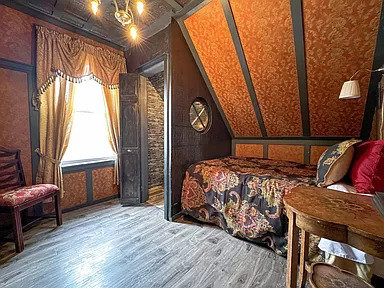
Very cozy bedroom. This home was carefully and lovingly decorated. I always wonder what makes people sell homes that were obviously loved.

This room has a half bath.
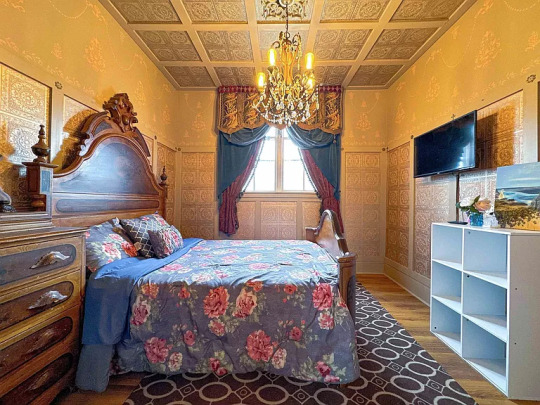
Here's a lovely elegant bedroom.
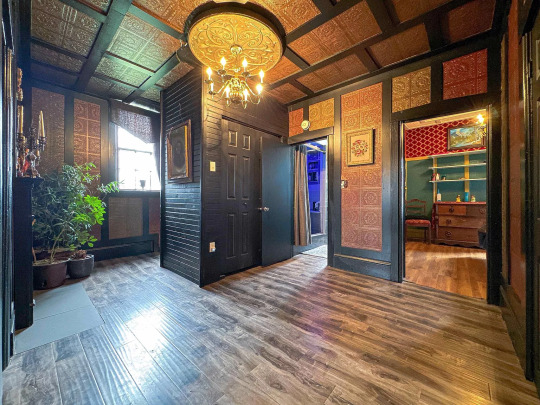
It's empty, but this room could be anything.

Love the fireplace in here.

The full bath looks like it could use some updating.

The shower looks new, though.
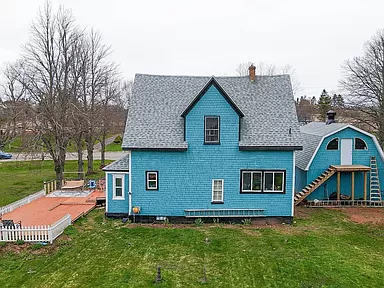

There's potential above the garage.

A pretty, small country church is next door and the new owner of the house will also share and enjoy its cemetery.
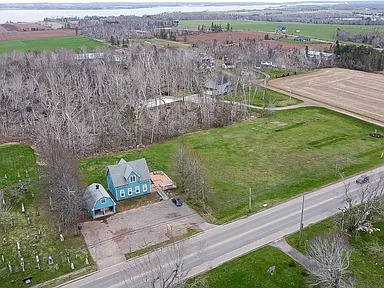
The house is on a .51 acre lot.
https://www.zillow.com/homedetails/14173-Saint-Peters-Rd-Charlotte-Parish-PE-C1C-0N6/349631687_zpid/?
204 notes
·
View notes
Note
I’ve been reading some craft books and online posts about the world building because my story is an urban fantasy set in present day US, in a fictional town, and theres not a secondary world where the fantasy happens, it’s all in the real world, except the magic is a secret that only certain people know about, but all of the resources I find about world building only talk about fantastical worlds that exist by themselves and not the kind of more subtle world building that I’d have to do. Do you have any tips?
Guide: Creating a Fictional Town in the Real World
Step 1 - Choose Your Location - There are two ways to go about choosing a location for your fictional town. One is to go the "Springfield U.S.A." route, ala The Simpsons, and be vague about the specific location (borough, parish, district, county, region, state, or province) and instead give a broader geographic region... "the East Coast," "the Pacific Northwest," "Central Canada," Northern Scotland," etc. The other option is to go ahead and put your fictional town in a specific location. Just figure out where (for example, somewhere outside of Des Moines, Iowa) and go to Google Maps, click on satellite view, then start zooming in on big empty areas. Choose a place big enough to fit a town. Yes, in reality it's probably farm fields, pasture, or someone's property, but that doesn't matter. You don't have to actually show it on a map. It's just a plausible spot to build your town. Now you can measure how far it is to other places, you know what highways to take to get to it. You can even do street view to get the lay of the land, see what the landscape looks like and try to envision the buildings there. You can also use what's there to create parks, popular recreational areas, and anything else your town needs.
Step 2 - Choose Your Inspiration - Even when you're creating a fictional town, it's still a good idea to use a real town (or two, or three) from that general area as inspiration for your town. For a fictional town in Des Moines, I would zoom in on the map to find a nearby town of similar size... like Elkhart, then I can take a look around to see what it's like. Just looking at the map, I can see they have a couple of churches, a couple baseball fields, a very small main street/downtown area with a couple shops and restaurants, a post office, a few different neighborhoods, and a cemetery. This would be a great model for a small fictional town outside of Des Moines. And, as I said, you could look at a couple other sand combine them. Once you have your inspiration town/s, you can walk around on Google Maps street view, go to the town's web site, watch a tour on YouTube (if one exists), or look up pictures in Google Image search.
Step 3 - Start Planning - This is the really fun part! First, you might want to draw a basic map of your fictional town using your inspiration town/s as a guide. This doesn't have to be a pretty map... just a basic line drawing to help you envision where everything is. Think about some of the basic things this town might have, like the ones I listed in step two, and any other things you might want your town to have, like maybe a library, a hospital, a city hall, school, and maybe a movie theater. It might even be helpful and fun to put together a collage of pictures to represent your town so you've got something in mind as you write about it. You can even choose representatives for specific locations in your story, like your MC's house, school, and their favorite hangout.
Step 4 - Naming Your Town - Start by looking at the kinds of town names that surround your town. Look for common naming conventions... suffixes like -ton, -ville, -dale, -burg, -wood, -field, etc. Words in a particular language, like a lot of French-inspired town names, or towns with geographical terms (lake, hill, valley, river, canyon, gap, etc.) My guide to Naming Locations has additional tips.
Step 5 - Populate Your Town and Give it a History - Last but not least, make up a little history for your town, again, using surrounding towns as inspiration. Who founded it? When was it founded? What's the town's main industry? What are the people like in this town? What jobs do they have? What do they do for fun?
Here are some other posts that might help:
Five Things to Help You Describe Fictional Locations
Setting Your Story in an Unfamiliar Place
WQA’s Guide to Internet Research
Happy writing!
•••••••••••••••••••••••••••••••••
I’ve been writing seriously for over 30 years and love to share what I’ve learned. Have a writing question? My inbox is always open!
♦ Questions that violate my ask policies will be deleted!
♦ Please see my master list of top posts before asking
♦ Learn more about WQA here
96 notes
·
View notes
Photo
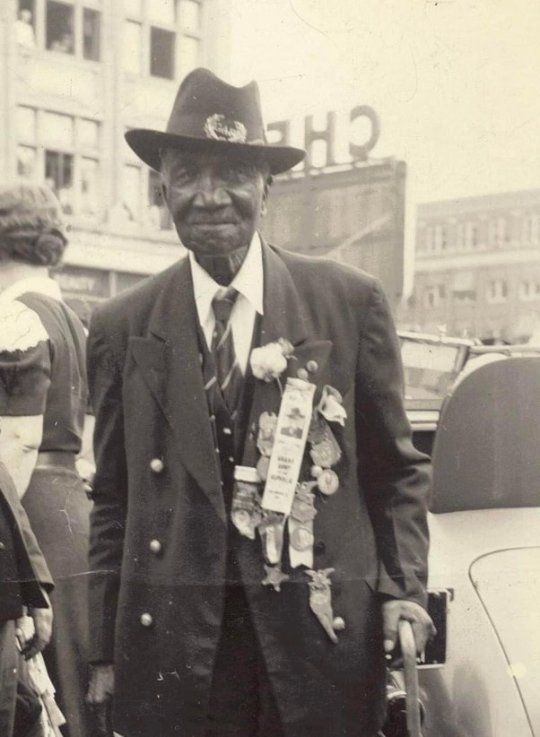
Joseph “Uncle Joe” Clovese was the last known surviving African soldier of the Union Army in the American Civil War, and lived in Pontiac at the time of his death in 1951. Clovese, who lived to be 107 years old, was born into slavery on a plantation in St. Bernard Parish, Louisiana, and escaped slavery in his teens to join the Union Army during the Siege of Vicksburg. He stayed with the Northern Army, first as a drummer, later as an infantryman. He was a private in Co. "C", 63rd Colored Infantry Regiment.
Following the war he worked on Mississippi river steamboats, and he later worked on the crew stringing the first telegraph wires between New Orleans and Biloxi, Mississippi. At the age of 104, Clovese moved from Louisiana to Pontiac, Michigan to be near family. Once the community learned about “Uncle Joe,” the citizens of Pontiac embraced him. Large gatherings were organized for his 105th, 106th and 107th birthdays on January 30th.
For his funeral, more than 300 people were packed into Newman A.M.E. Church in Pontiac (their former location, in downtown) for the service. Hundreds more gathered at the gravesite in Pontiac’s Perry Mount Park Cemetery. Veterans from the Oakland County Council of Veterans served as pall bearers. A firing party from Selfridge Air Force Base fired the final salute and taps was sounded over the cemetery. Pontiac even named a road in his honor, that ran through the Lakeside Homes complex.
455 notes
·
View notes
Text
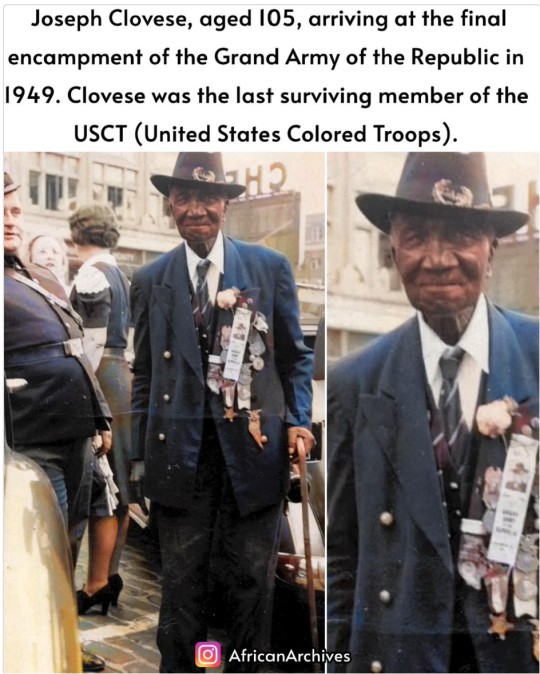
Joseph “Uncle Joe” Clovese was the last known surviving Black soldier of the Union Army in the American Civil War, and lived in Pontiac at the time of his death in 1951. Clovese, who lived to be 107 years old, was born into slavery on a plantation in St. Bernard Parish, Louisiana, and escaped slavery in his teens to join the Union Army during the Siege of Vicksburg. He stayed with the Northern Army, first as a drummer, later as an infantryman. He was a private in Co. "C", 63rd Colored Infantry Regiment.
Following the war he worked on Mississippi river steamboats, and he later worked on the crew stringing the first telegraph wires between New Orleans and Biloxi, Mississippi. At the age of 104, Clovese moved from Louisiana to Pontiac, Michigan to be near family. Once the community learned about “Uncle Joe,” the citizens of Pontiac embraced him. Large gatherings were organized for his 105th, 106th and 107th birthdays on January 30th.
For his funeral, more than 300 people were packed into Newman A.M.E. Church in Pontiac (their former location, in downtown) for the service. Hundreds more gathered at the gravesite in Pontiac’s Perry Mount Park Cemetery. Veterans from the Oakland County Council of Veterans served as pall bearers. A firing party from Selfridge Air Force Base fired the final salute and taps was sounded over the cemetery. Pontiac even named a road in his honor, that ran through the Lakeside Homes complex.
Source: African Archives
128 notes
·
View notes
Text

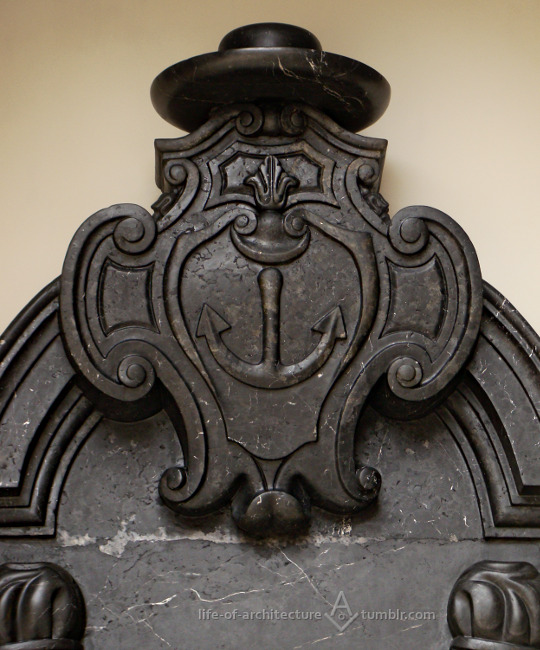
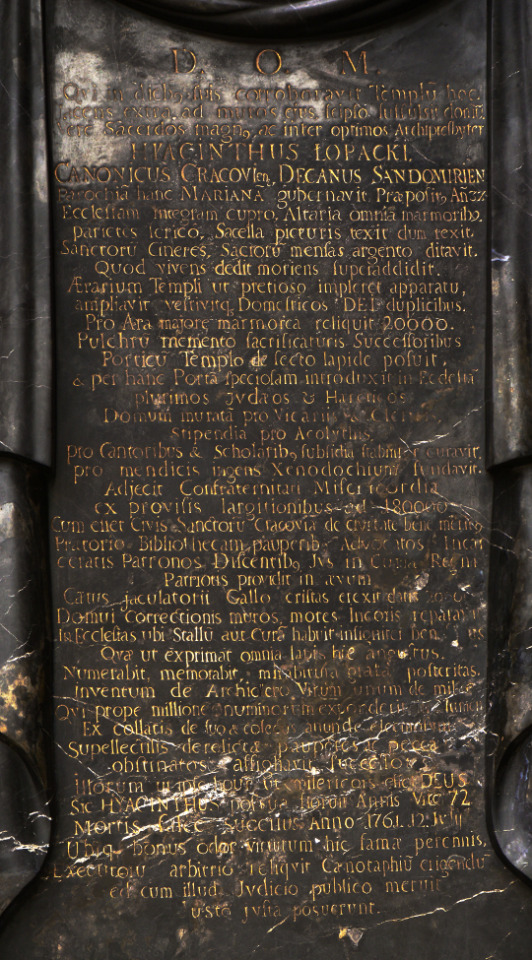

Kraków
Kościół Wniebowzięcia Najświętszej Marii Panny czyli Bazylika Mariacka
foto z 18 grudnia 2019 i 15 lipca 2020
Wysokie na ponad cztery metry epitafium z czarnego marmuru dębnickiego, projektu Franciszka Placidiego, poświęcone dwudziestemu czwartemu archiprezbiterowi parafii mariackiej. Jacek Augustyn Łopacki herbu Kotwica (1690-1761) był doktorem filozofii i medycyny oraz fundatorem licznych przedsięwzięć charytatywnych i artystycznych. W młodości osobisty medyk kardynała Conti zanim ten został papieżem Innocentym XIII, potem w Krakowie leczył na równi magnatów i robotników. Pochowano go w tym miejscu zgodnie z jego własnym życzeniem.
Pragnę i nieodmiennie naznaczam, aby ciało moje bez żadnej odwłoki, zaraz in crastino śmierci pogrzebione było przy kościele Najświętszej Panny Maryi w Krakowie na cmentarzu w ziemi w tyle ołtarza Crucifixi przy murze kościelnym.
fragment testamentu J.A. Łopackiego
Czemu się mam żalić, że chociaż dopiero przy zaczynających się żniwach, a już frumentum Electorum nieodżałowany Prałat grobowym na proch jest starty kamieniem, że usechł w oczach naszych tak ozdobny rozmaitym cnót Świętych kolorem, dosyć pięknego bo liliowej niewinności różowego wstydu, ten hiacyntowy kwiat flos decidit & decor.
fragment mowy Jana Kantego Laskiewicza na pogrzebie Łopackiego
rysunek Stanisława Cerchy z 1902 r.

akwarela Stanisława Fabijańskiego z 1917 r.
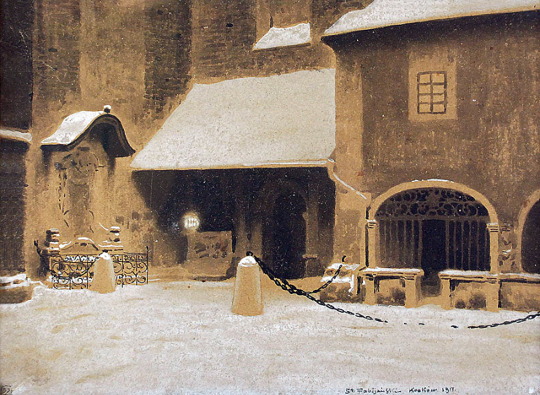
rysunek Leona Kowalskiego z 1924 r.

akwarela Stanisława Janowskiego sprzed 1942 r.
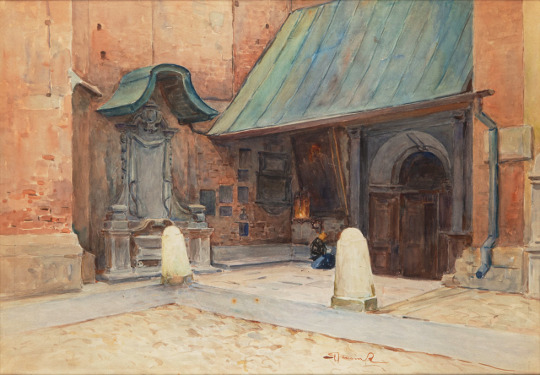
Zdzisław Gajda, historyk medycyny, przytacza anegdotę o Łopackim:
…były krakowskie odpusty u Panny Maryi okazją do swoistego widowiska: przychodziły tłumy op��tanych, wzbudzając widokiem swych cierpień najwyższe politowanie, co równoznaczne było z rozsupływaniem mieszka. Otóż po głównych uroczystościach kościelnych wychodził archiprezbiter na plac przed kościołem w stroju pontyfikalnym, przed nim zbierała się gromada dręczonych przez złe duchy (…). Otóż Łopacki, jak to u dobrych lekarzy bywa, nie był w ciemię bity i miał dobry zmysł obserwacji, nie odmawiał tradycją przyjętego zwyczaju, ale podejrzenie miał. I pewnego dnia się przejadło. Wyszedł jak zwykle, modły odmówił, kropidło wziął, opętanych pokropił, a gdy spodziewanego skutku wszyscy się dopatrzyli, rzekł: A oszuści, a nicponie! A udawacze! Gdybyście byli prawdziwie opętani, nic by wam nie dało to moje kropienie, bom zwykłej, a nie święconej wody na was użył!
fragmenty dyplomu doktora medycyny Jacka Łopackiego wydanego przez Uniwersytet w Padwie w 1711 r.
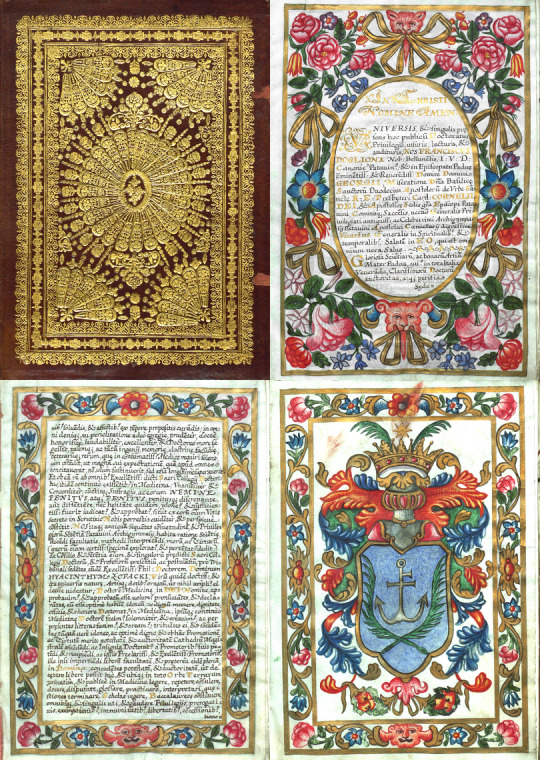
portret Iacentego (Jacka) Łopackiego w siedzibie Arcybractwa Miłosierdzia, mniej niż 100 metrów od jego grobu
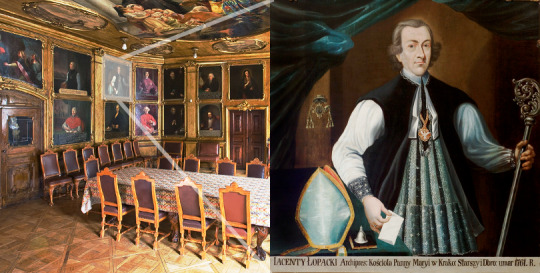
<><><><><><><><><><><><><><><
Kraków, Poland
Saint Mary's Basilica
taken on 18 December 2019 and 15 July 2020
Over four meters (14 ft) tall epitaph made of black marble, designed by Francesco Placidi, marking the grave of Jacek Augustyn Łopacki (1690-1761) of the Kotwica coat of arms, the 24th Arch-Priest of the St. Mary's parish, and also Doctor of Medicine and Philosophy, a philanthropist and art patron. In his younger years he was the personal physician of Cardinal Michelangelo dei Conti before the latter became Pope Innocent XIII; later in Kraków he kept treating magnates as well as laborers. He was buried on this site in accordance with his own wish.
I want and consistently make a disposition for that my body, with no delay [and] just in crastino of death, shall have buried in the cemetery next to St. Mary's Church in Kraków, in the ground behind the Crucifixi altar next to the church's wall.
excerpt from J.A. Łopacki's last will
Why should I complain that though the harvest time has barely started, frumentum Electorum lamented Prelate already is ground by tombstone into dust, that a Hyacinth flower, so adorned with the color of various Holy virtues [that is] quite beautiful lily-rose innocent modesty, already wilted before our eyes, flos decidit & decor.
excerpt from the speech of Jan Kanty Laskiewicz at Łopacki's funeral
[drawing by Stanisław Cercha, 1902]
[watercolor by Stanisław Fabijański, 1917]
[drawing by Leon Kowalski, 1924]
[watercolor by Stanisław Janowski, before 1942]
Zdzisław Gajda, historian of medicine, recounts an anecdote about Łopacki:
…parish festivals at St Mary's used to be an occasion for a peculiar spectacle: crowds of possessed came arousing pity with the sight of their suffering, which resulted in loosening the purse strings. After the main celebration the Arch-Priest used to come out wearing the pontifical vestments to the square in front of the church and before him gathered a huddle of those tormented by evil spirits … Łopacki, as good doctors are, was no fool and had good observation skills, hence while not denying the tradition, he had his suspicions. And some day he had enough. He came out as usual, said the prayers, took the aspergillum, sprinkled the possessed, and as soon as everybody saw the expected result, he exclaimed: Ah, you frauds! Scallywags and impostors! If you were truly possessed, my sprinkling would help you nothing, as I have used ordinary, not holy water on you!
[pieces of Doctor of Medicine diploma of Jacek Łopacki issued by the University of Padua in 1711]
[portrait of Hiacynt (Jacek) Łopacki in the premises of the Archbrotherhood of Mercy, less than 100 m (90 yd) from his grave]
#dark academia#Baroque#historical facts#anecdotes#tombstones#tombs#graves#historical figures#photographers on tumblr#original photography#Poland#Polska#Kraków#Krakow#marble#catholicism#medicine doctors#priests#memorials#monuments
43 notes
·
View notes
Text
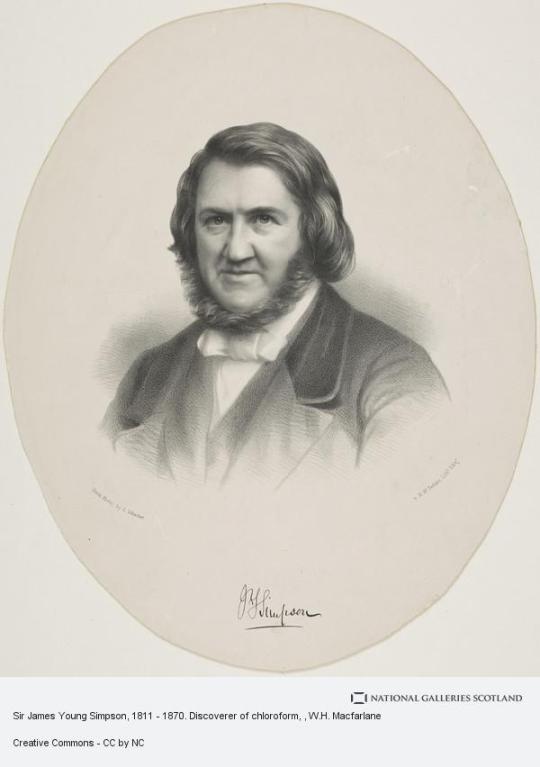

On May 6th 1870 Sir James Young Simpson, Scottish physician, died.
James Simpson was born on 7 June 1811 in the village of Bathgate,his parents were the village bakers and he was one of 7 children. However his mother died when he was 9 years old. James Simpson attended the parish school then went on to study medecine at The University of Edinburgh and became Professor of Midwifery there. Simpson wanted to cut down the suffering of his patients in childbirth.He often used ether, but disliked it because of its strong smell which made his patients cough.
In 1847, Simpson and two assistants experimented with a new anaesthetic, chloroform, which had none of the side effects of ether. Within a month he had used it successfully on over 50 patients.
Unfortunately, the use of chloroform was not without risks. Some doctors did not know how to use it properly and in 1848, Hannah Green, aged 15, died from an overdose. There was opposition from those who saw chloroform as unnatural and members of the Calvinist Church of Scotland claimed its use was forbidden in the bible.
In 1853 Queen Victoria was successfully anaesthetised during the birth of her eight child. This turned the tide and from then on chloroform became widely accepted. However, its effects sometimes meant that surgeons spent too long on operations and patients could still die from blood loss and infection.
Although his name is always mentioned in books as the developer of anaesthetics, chloroform was only used until around 1900 when it was discovered that it could damage the liver. From then on surgeons returned to using ether. Today, surgeons use a complex mix of drugs administered by a qualified anaesthetist. Simpson’s use of chloroform helped to gain popular support for the use of anaesthetics.
Simpson's most significant contribution to medicine was the introduction of anaesthesia to childbirth, however he also improved the design of obstetric forceps that to this day are known in obstetric circles as "Simpson's Forceps", as well as designing the Air Tractor in 1838. He also became an expert on the history of leprosy in Scotland.
He died at his home in Edinburgh in May 1870 at the age of fifty-eight. A burial spot in Westminster Abbey was offered to his family, but they declined and instead buried him closer to home in Warriston Cemetery, Edinburgh.
8 notes
·
View notes
Note
trickrtreat! 🍬 (star wars!)
From this ask game |
🎃ᴀɴᴅ ʏᴏᴜʀ ᴛʀᴇᴀᴛ ɪs…!🍬
🕯️Horror Obikin AU! 🕸
Obi-Wan is a priest assigned to a new parish. When he arrives, he notices to his surprise that the caretaker is a beautiful young man who avoids the townspeople like the plague.
Obi-Wan makes it his business to try to befriend Anakin. After all, they're the only ones around when services aren't being held. And Anakin seems so lonely despite his moody and sarcastic reactions.
Eventually, Obi-Wan grows concerned when he notices Anakin is looking ill. He already wears more layers and covers up more skin than even Obi-Wan, but now he's even more skittish. His skin is pale, and there's a strange odor of sickness to him.
After what should be normal bickering turns into an actual fight after a funeral is held, Obi-Wan is more alarmed than ever, and decides to watch over the caretaker's cottage from a distance. If anything should happen to Anakin, who would know?
What he sees stuns him. Anakin creeps out of his home and returns to the fresh grave to dig it up. In the moonlight, Obi-Wan watches as Anakin devours the corpse, bones and all, and then hides the evidence.
Obi-Wan prays for guidance, but by the next day he has no answers. And the thing is... Anakin is back to normal. Like a feral cat in the process of being tamed, he mumbles an apology, and Obi-Wan knows he should tell someone, this isn't right, Anakin is sick somehow, disturbed.
But he stays silent. And over the following months, he notices that every so often Anakin's health worsens--coinciding between how long it is between new graves added to the cemetery. Anakin, he deduces, somehow needs to eat corpses to survive.
And he's not wrong, but as he discovers the night that someone tries to steal from the church, it isn't only the dead that Anakin will feed on.
(long story short: Anakin is a demonic undead. If he goes too long without eating, his skin, his limbs, all of it rots away. He's much older than he looks, and he used to eat living people--which is much better "food" for him--and he's the reason behind local serial killer/monster in the wood legends all around the country. When he can find somewhere quiet to settle down for a few years, he's fine with living off corpses as long as they're not too old.
Obi-Wan has to ultimately decide whether he loves a monster enough to be complicit, or turn Anakin over to the church.)
19 notes
·
View notes
Text
THIS DAY IN GAY HISTORY
based on: The White Crane Institute's 'Gay Wisdom', Gay Birthdays, Gay For Today, Famous GLBT, glbt-Gay Encylopedia, Today in Gay History, Wikipedia, and more … April 10


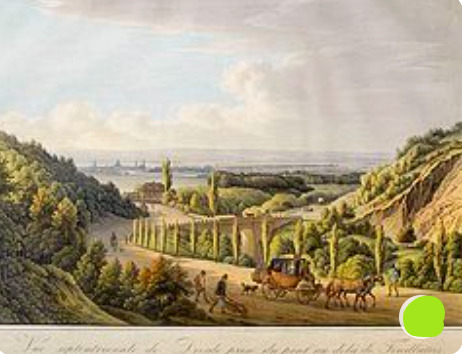
Ogilvy's vinyards near Dresden
1750 – James Ogilvy, the 7th Earl of Findlater and 4th Earl of Seafield (d.1811), was an accomplished amateur landscape architect and philanthropist of the late eighteenth century. He promoted the English landscape garden in mainland Europe, where he spent lavishly on public works and "improvements of the scenery."
Ogilvy's decision to live abroad was a not uncommon choice of wealthy Englishmen and Scotsmen with same-sex sexual interests in the eighteenth century. In Europe his discreet practice of homosexuality was accepted by society as an unacknowledged quid pro quo for his sponsorship of public improvements. After his death, however, scandal erupted when he was outed by his own relatives in Scotland.
In 1770, after his father's suicide, Lord Findlater inherited his family's vast estates. The estates in Scotland yielded about £40,000 per year, an enormous sum that gave him the freedom to travel and to reside abroad.
In 1779, Findlater married Christina Teresa Murray in Brussels, but two years later, he left her and lived abroad for most of the rest of his life, especially in Dresden and Carlsbad.
Findlater's decision to relocate to Europe was no doubt strongly influenced by his homosexuality. He may indeed have been unofficially banished for his "unnatural transgressions." In any event, like his younger contemporary George Gordon, Lord Byron, among many others, Findlater realized that he could not live the life he desired in the United Kingdom.
In 1808 Findlater met the German poet Johann Wolfgang von Goethe in Carlsbad. Goethe would still tell anectodes about him many years after his death in 1811.
Despite his association with Carslbad, Lord Findlater's primary investment abroad, however, were the vineyards at Loschwitz near Dresden. Initially motivated by his interest in wine, he managed to acquire five of the eight major vineyards in the region.
With the help of Johann Georg Fischer, his close companion, confidant, secretary, and lover, Findlater began, by the end of 1805, to turn this site into a beautiful landscape garden with precious shrubs and trees on its terraces.
Later, Findlater commissioned the architect Johann August Giese of Gotha to construct a magnificent palace in neoclassical style. It was subsequently replaced by the Lingner Palace, but in its time it was considered "the most beautiful residence in Dresden."
Lord Findlater died on October 5, 1811, soon after construction of his palace was completed. Findlater's sole heir was Johann Fischer, who had already received the Eckberg estate and the manor of Helfenberg from him.
Fischer, whose wife divorced him when she surmised the nature of his attachment to Findlater, was subsequently sued by the aristocrat's Scottish relatives. They went to court claiming that the bequest to Fischer had been made in pursuit of lewdness. Their suit, which created a scandal, was successful. They were able to keep the estates in Scotland as family property but at the expense of Findlater's reputation in the United Kingdom.
When Fischer died years later, at the age of 87, he was buried in Findlater's tomb at the cemetery around Loschwitz Parish Church.

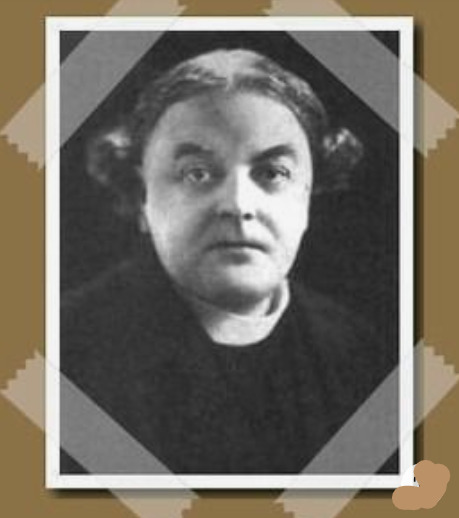
1880 – On this date the eccentric English author and clergyman Augustus Montague Summers was born (d.1948). He is known primarily for his scholarly work on the English drama of the 17th century, as well as for his idiosyncratic studies on witches, vampires, and werewolves, in all of which he professed to believe. He was responsible for the first English translation, published in 1928, of the medieval witch hunter's manual, the Malleus Maleficarum.
Despite his conservative religiosity, Summers was an active member of both the British Society for the Study of Sex Psychology, to which he contributed an essay on the Marquis de Sade, and of the Order of Chaeronea, a secret society which cultivated a homosexual ethos. Summers' Gay interests also show in his edition of the poems of the sixteenth century poet Richard Barnfield, which partly are openly homosexual.


1934 – Kin Hoitsma was an American fencer born on this date (d.2013); Hoitsma competed in the individual and team epée events at the 1956 Summer Olympics. He later became a teacher. He was a long time lover of photographer and designer, Cecil Beaton.
Kinmont Trefry Hoitsma was born in Cooperstown, New York, the son of a salesman in the paper trade, in turn the son of a cattle rancher in Wyoming who had emigrated from Holland. The family was peripatetic, moving between the East Coast and the Midwest. Kin graduated from Shaker Heights High School in Ohio, and went on to Princeton University where he studied Greek and majored in French.
In 1956 he competed in the Ivy League Fencing Championship. He went on to the collegiate finals, and in November that year, aged 22, fenced for the United States at the Melbourne Olympics. The men’s epée team did not make it beyond the first round, though in the individual men’s epée Hoitsma reached the quarter-finals.
On his way back from the Games Hoitsma stopped off in San Francisco, and settled there, studying Architecture and Art History at Berkeley before taking a variety of jobs. It was during this period that he met Beaton.
Hoitsma met Beaton in 1963, when the photographer was in Hollywood creating costumes and sets for the film of My Fair Lady. One weekend in March, Beaton escaped to San Francisco, where he wound up at a bar called the Tool Box and met the handsome, 6ft 3in Kin Hoitsma.
An unlikely friendship formed, and soon Beaton was to be found hiking in Big Sur and camping out under the stars in the Yosemite Valley. Hoitsma was able to discuss art, but he had never heard of Chanel — or, for that matter, of Beaton. The relationship was greatly encouraged by Christopher Isherwood, and Truman Capote.
On his return to Britain, Beaton invited Hoitsma to move in with him. Hoitsma met Princess Margaret and became fond of Pauline de Rothschild and Countess Brandolini. But after a year he told Beaton that he had to leave: he was yearning for the hills around San Francisco.
Beaton, though devoted to Kin, was not cut out for domesticity; but he was still devastated. The two men remained friends to the end.


1968 – Lawrence La Fountain-Stokes, better known as Larry La Fountain, is a gay Puerto Rican author, scholar, and performer. He has received several awards for his creative writing and scholarship as well as for his work with Latino and lesbian, gay, bisexual, and transgender (LGBT) students.
La Fountain-Stokes was born and raised in San Juan, Puerto Rico. He was adopted at birth by Donald and Ramona La Fountain, and is the brother of the ESPN newscaster Michele La Fountain. He has written about his childhood experiences in an essay called "Los nenes con los nenes y las nenas con las nenas" (Girls with Girls, and Boys with Boys). His essay "Queer Diasporas, Boricua Lives: A Meditation on Sexile" also discusses some of these early experiences.
La Fountain-Stokes is best known as an author of short stories, but he has also published poetry and received awards for his plays. He has also done some performing, specifically his 2004 one-man show Abolición del pato/Abolition of the Duck, which he did as part of the Casa Cruz de la Luna First Experimental Festival in San Germán, Puerto Rico, and later at the Bronx Academy of Arts and Dance Out Like That Festival. The Village Voice described Abolition of the Duck saying "This is not Avenue Q" in reference to the artist's use of indigenous dolls as puppets to talk about Puerto Rican homosexuality.
His short stories have appeared in a number of anthologies such as Bésame Mucho: New Gay Latino Fiction (1999) and Los otros cuerpos: Antología de temática gay, lésbica y queer desde Puerto Rico y su diáspora (2007). He has also published in journals and websites such as Blithe House Quarterly and Harrington Gay Men's Fiction Quarterly. His first book of short stories is called Uñas pintadas de azul/Blue Fingernails (2009) and includes 14 short stories written in the 1990s and early 2000s.
Most of La Fountain-Stokes's stories focus on gay Puerto Rican characters, and sometimes incorporate elements of science fiction and fantasy.


1980 – Sean Avery is a Canadian former professional ice hockey player. During his career in the National Hockey League (NHL), he played left wing for the Detroit Red Wings, Los Angeles Kings, Dallas Stars and New York Rangers, gaining recognition for his agitating playing style and controversial behavior both on and off the ice. He is also known for his eclectic interests, having worked in fashion, most notably as an intern at Vogue magazine; as a model; and as a restaurateur. He finished his 12-year career with a total of 90 goals, 247 points and 1,533 penalty minutes in 580 games.
In May 2011, Avery recorded a video for the New Yorkers for Marriage Equality campaign, in support of same-sex marriage. Avery was believed to be the first athlete in New York to publicly voice his support for same-sex marriage. In an interview with the New York Times, he stated, "I certainly have been surrounded by the gay community. And living in New York and when you live in L.A., you certainly have a lot of gay friends." Avery also traveled to Albany, New York, to lobby politicians prior to the July 2011 legalization of same-sex marriage in New York State.
After retiring in 2012, Avery began working at advertising and creative agency Lipman in New York City.
In May 2012, Avery joined the board of directors of Athlete Ally, a nonprofit organization focused on ending homophobia and trans-phobia in sports by educating those in the athletic community and empowering them to take a stand against prejudice. Athlete Ally also provides public awareness campaigns, educational programming, and tools and resources to foster inclusive sports communities around the country.


1983 – Gabriel Arana is an American journalist. He is currently senior editor at Mic. He was previously a contributing writer at Salon and a senior editor at The Huffington Post and The American Prospect.
Gabriel Arana grew up in Nogales, Arizona, on the Mexico–United States border. He attended Yale University where he wrote for the Yale Daily News and graduated with a degree in linguistics. He then attended Cornell University, from which he holds a master's degree, also in linguistics.
His articles have appeared in numerous publications, including The New York Times, The Atlantic, The New Republic, The Nation, The Advocate, and The Daily Beast.
He is also known for writing a 2012 profile of the ex-gay movement in which psychiatrist Robert Spitzer repudiated his work supporting sexual orientation change efforts. After the article was published, Spitzer released a letter apologizing to the gay community, citing his interaction with Arana.In 2010, Arana was nominated for a GLAAD Media Award for Outstanding Magazine Article for a feature story on the legal challenge to California's Proposition 8. In 2014, he was awarded the National Lesbian and Gay Journalists Association's Excellence in Feature Writing Award for his profile of activist Dan Choi. He has been a guest on television and radio talk shows including The Dr. Oz Show, Rachel Maddow, Starting Point, and Talk of the Nation.
He married his same-sex partner in Washington, D.C. in 2011.


12 notes
·
View notes
Photo

The mysterious moving coffins of the Chase Vault, Christ Church Parish cemetery, Barbados
39 notes
·
View notes
Text
youtube
Have you seen the places in the Vampire Chronicles and other AR books? Did you know you could do it from the comfort of your own blanket burrito? Then check out this video!
I just want to mention a few things that the tour guide doesn't.
Saint Elizabeth's is the place where Lestat laid at the end of Memnoch the Devil.
This tour didn't hit the church that is mentioned most often in regard to Louis and Lestat, the St. Louis Cathedral, 615 Pere Antoine. It is in Jackson Square in the French Quarter. It's the oldest cathedral in North America, built in 1720 so that is the church that most Catholics in New Orleans would have attended for many years, and it's age is why Louis and Lestat were there often, because it was the only one around, and once they are in the 20th century, it has memories. St. Louis Cathedral is sort of open to the public as there are tours there. These are to show you the beautiful artwork, the sculpture, and the history of the building. It is also open for Mass (church services, for thise not familiar with Catholic vernacular), but if you go for Mass, you should sit in a pew and pay attention to the Mass. You are with the congregation who attend every week, this is their church, not a setting from a novel or the set of a television show. If you join a tour however, you can wander a bit, so long as you do not disrupt the rest of the tour. Do not attempt to go up to the altar. That is a sacred space to Catholics, only the priest and others participating in the presentation of the Mass (deacons, readers, acolytes, altar helpers) are allowed there. It would be deeply disturbing to the tour guide and other Catholics on the tour if you would attempt to do this. The Cathedral has it's own website with mass times and some photos of the interior artwork.
Lafayette Cemetery is not owned by the diocese of New Orleans. Professional filming is allowed there. The scenes from the 1994 movie were filmed there. There are tours there which might point out the exact places. But the cemetery mentioned most in the book is St. Louis no. 1. It is the oldest cemetery still in existence in New Orleans. There are cemetery tours which will take you there and show you around. It is open to the public, but I would strongly advise you to go with a tour. The cemetery is large, old, not set out in straight lines, an the tombs are so tall that you cannot look across the cemetery to see the entrance. It is a maze that makes no sense. You will get lost. Probably you will eventually find your way out, but it could be hours, and there will be few, if any, other people in the cemetery who can help you out. Also, at least in the 90s and I assume still today, both Saint Louis No. 1 and No. 2 are popular places for drug deals and other crime, specifically because of the the arrangement of the tombs which makes it easy to go unseen by anyone, especially police. They will purposely stay away from the tours, so that is the safest way for you to see the cemeteries. The cemeteries are not open at night. It is probably fairly easy to find a way in, but it is ten times more dangerous at night. I get the aesthetic, but don't do it.
The First Street house is the most famous as Anne Rice's house. The Garden District Book Shop used to sell t-shirts with the house on them. It is where not only the family, but the real life Mojo lived! It is also the family home of the Mayfair clan, every witch has lived there.
This is much longer than I thought it would be! Sorry for being so preachy about the Cathedral and the cemeteries!
9 notes
·
View notes
Text

#my photo#cemetery#graveyard#st. mary's parish church#taphophilia#west sussex#coffin headstones#gothic
130 notes
·
View notes
Text
On June 7th, we venerate Elevated Ancestor Mother Julia Greeley on the 105th anniversary of her passing 🕊

Affectionately known as Denver’s Angel of Charity, Mother Julia is a Servant of God & is the Patron of Black Catholics, Firefighters, Children, & the Poor/Homeless.
Mother Julia was born enslaved in Hannibal, Missouri sometime between 1833 -1848. She endured hellish treatment, even as a young child beneath her mother's skirts. During one fateful event, in particular, she was stricken by the whip that the slave master used while beating her mother; permanently damaging her right eye. Decades passed before she became among the first "freeman" in the state following the Emancipation Proclamation in 1863. A young woman now, Mother Julia subsequently earned her living by serving White families throughout Missouri, Colorado, Wyoming and New Mexico —though primarily in the Denver area. It was her work with the family of Colorado’s first territorial governor that brought her to Denver in 1878.
Two years later, she worked odd jobs around the city until she came upon the steps of the Sacred Heart Parish of Denver, where she was conditionally baptized into the Catholic Church - since she hadn't known if she'd ever been baptized before. She became an enthusiastic parishioner, a daily communicant, & became an active member of the Secular Franciscan Order in 1901. The Jesuit priests at her parish recognized her as the most fervent promoter of devotion to the Sacred Heart of Jesus that they'd ever witnessed.
She was often seen wearing a floppy hat, oversized shoes, & dabbing her injured right eye with a handkerchief while pulling her red wagon of goods to deliver to the poor & homeless of the city. She'd often do this at night, knowing that some of the poor White families would be embarrassed to be seen receiving charity from her, a Black woman. Whatever she did not need for herself, she gave to the poor. When she had nothing more to give, she begged for food, supplies, & clothing for the needy.
She had a particular devotion to the Sacred Heart of Jesus, and would deliver pictures & pamphlets depicting it each month to firefighters throughout the city of Denver. As a daily communicant, Mother Julia also had a rich devotion to the Blessed Sacrament and the Blessed Virgin. She'd recite prayers even while working outside of the parish. She did so until the day of her death. Mother Julia died on June 7, 1918 — ironically on the day of the Feast of the Sacred Heart, around 80 years old.
After which, her body lay in state for 5hrs in a funeral that drew hundreds throughout the city to pay their respects to the woman who fed, clothed, & suported them in the dark for years on end.
Mother Julia was buried in Mt. Olivet Cemetery. The Catholic Church finally granted the request from many for her to be considered for canonizatio in 2016.
As part of the Cause for Canonization, her body was transferred to Denver’s Cathedral Basilica of the Immaculate Conception in 2017. Her remains were placed in a funerary box made of exotic red heart wood near the altar of the Sacred Heart in the northwest corner of the sanctuary, which will later be encapsulated in a sarcophagus made of Caralla marble (the same stone used by Michaelangelo in his statues). She is one of 6 Afrikan descendants in the U.S. to have open canonization causes with the Catholic Church. Currently, she remains a Servant of God.
In 2012, Catholic Priest, Father Blain Burkey authored a book entitled, “In Secret Service of the Sacred Heart: The Life and Virtues of Julia Greeley,” which later was adapted as a documentary film.
" My communion is my breakfast " - Mother Julia to the priests of her parish.
We pour libations & give her 💐 today as we celebrate her for her service to the city of Denver & for her patronage of all Black Catholics, firefighters, children & the homeless communities whom she served.
Offering suggestions: red wine, bread, catholic Bible, the Sacred Heart of Jesus, parish of denver badge, & little red wagons.
#mother julia greeley#servant of God#black catholic#ancestor veneration#elevated ancestors#Hoodoo#hudu#the hoodoo calendar
34 notes
·
View notes
Note
Will all the presidents who are still alive right now be buried at their presidential libraries when they die?
John F. Kennedy is buried at Arlington National Cemetery and Lyndon B. Johnson is buried in a family graveyard near the LBJ Ranch, but every other President since Herbert Hoover has been buried on the grounds of their Presidential Library or Museum (Gerald Ford's Presidential Library and Presidential Museum are in separate locations and he's buried at his Museum), so that's the most likely scenario for the Presidents who are still living today.
Jimmy Carter will be buried in the yard of his longtime home in Plains, Georgia (which is a National Historic Site) instead of his Presidential Library in Atlanta.
Bill Clinton will be buried on the grounds of his Presidential Library in Little Rock, Arkansas. This is actually where Clinton's grave will eventually be located:

For many years, George W. Bush was going to be buried at the Texas State Cemetery in Austin and he and former First Lady Laura Bush had even chosen their plot already. However, following the death of Bush's mother in 2018 and her burial at the George H.W. Bush Presidential Library in College Station, Texas, the former President and his wife decided that they will eventually be laid to rest at the George W. Bush Presidential Library, located at Southern Methodist University in Dallas.
We don't know where Barack Obama or Donald Trump will be buried. Obama is building his Presidential Center in Chicago, but it is apparently against the law for people to be buried anywhere other than cemeteries in Chicago.
President Biden also has not revealed any plans about where he will eventually be buried. However, nearly all of President Biden's immediate family members have been buried at the parish cemetery of St. Joseph on the Brandywine Catholic Church near Wilmington, Delaware, including Biden's parents, his first wife Neilia and infant daughter Naomi (who were killed in car accident in 1972), as well as his beloved son, Beau, who died of brain cancer in 2015. Considering how tight-knit Biden's family has been, I would not be surprised if that will someday also be the President's final resting place.
#Presidents#Presidential Graves#Presidential Gravesites#Presidential Burials#Presidential Burial Sites#Presidential Funerals#Presidential Deaths#Presidential Libraries#History#Jimmy Carter#President Carter#Bill Clinton#President Clinton#George W. Bush#Bush 43#President Bush#Barack Obama#President Obama#Donald Trump#President Trump#Joe Biden#President Biden
36 notes
·
View notes
Text






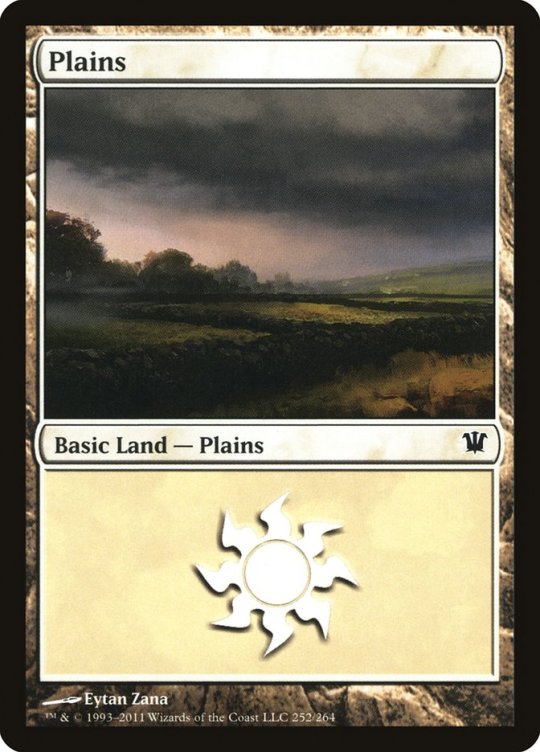



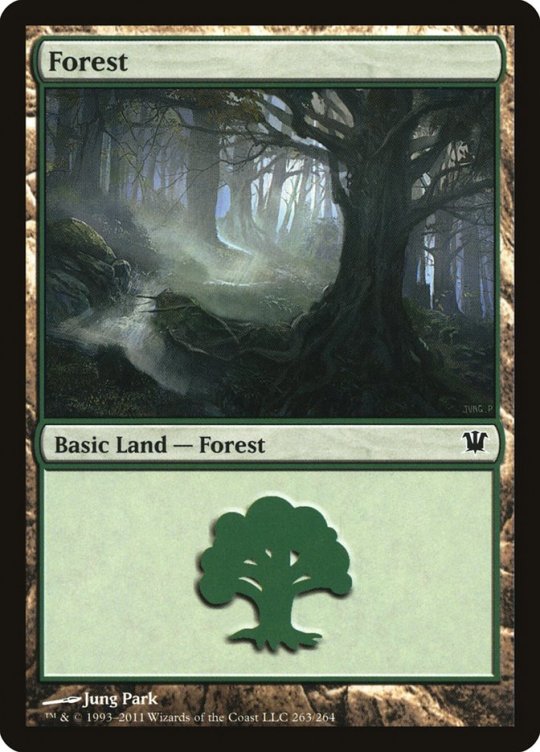


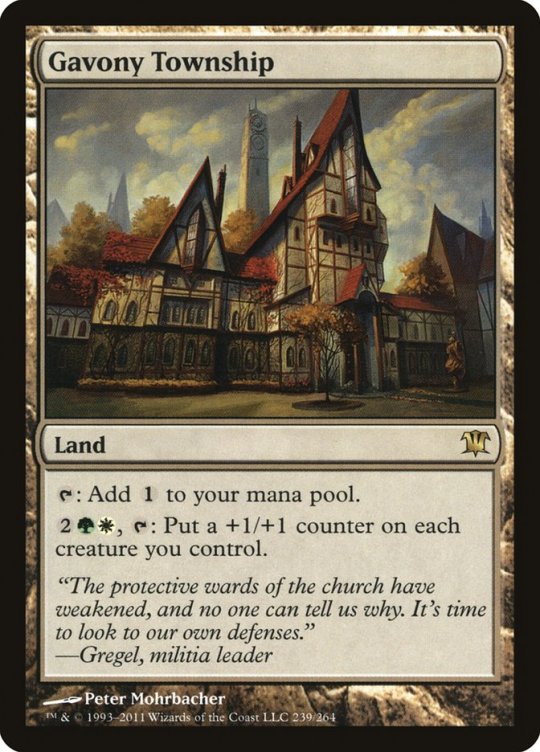
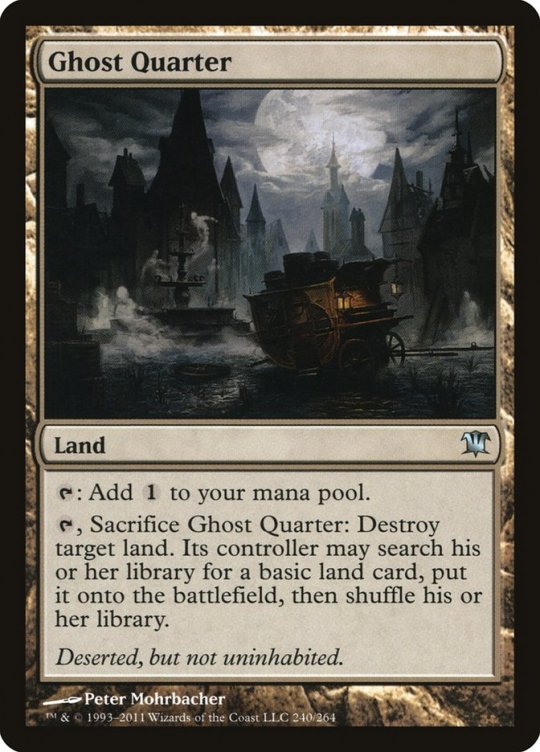
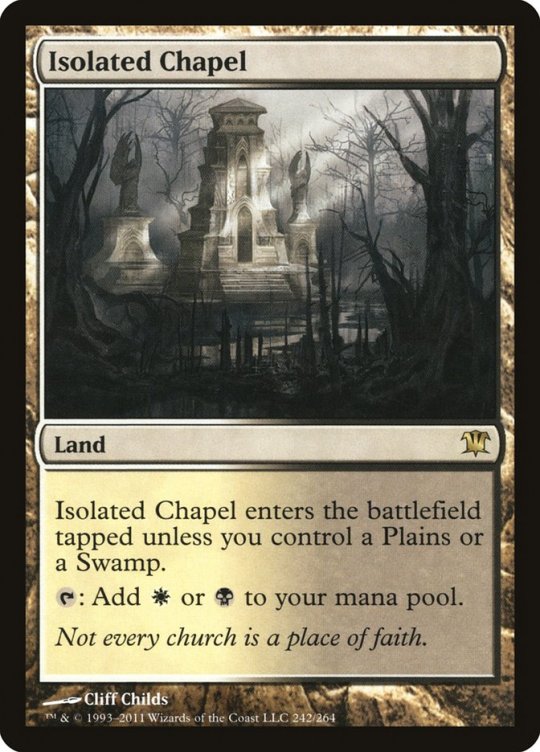
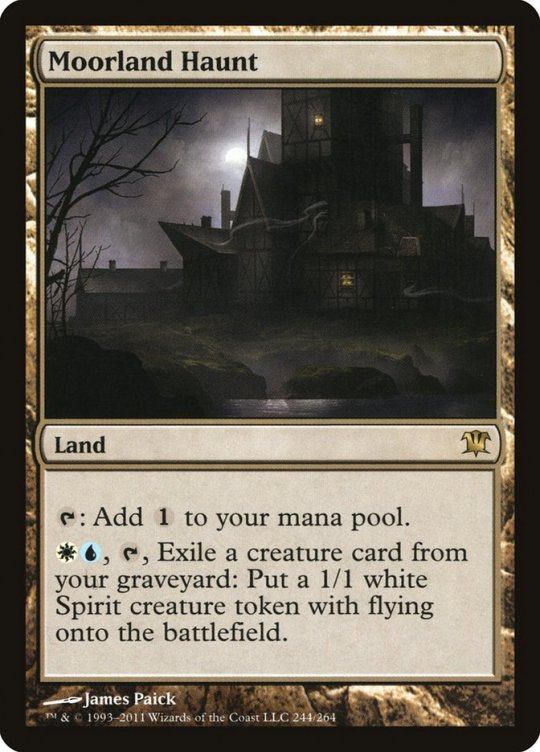
Magic the Gathering: Innistrad (Innistrad block)
My favorite Land cards
The plane of Innistrad is divided in four great regions, called the "Provinces".
The first province, Gavony, is the "safest" area for humans in Innistra, and thus the province with the highest number of humans. Gavony is home to Thraben, the High City. Ah, Thraben! The largest city of the continent. The center of the Church of Avacyn. A fortress built to resist all supernatural attacks. It is here that Avacyn the Archangel once resided, wthin Thraben's Great Cathedral, and the city is located on the mesa of a lake known as the "Lake of the Herons" (in Innistrad, herons are believed to the the birds of the moon, and by extension symbolize goodness and Avacyn's power). At the northern edge of Gavony, Thraben is a city of cleanliness and order, inhabited mostly by clerics, merchants and artisans. Everything is neatly divided and organized within the city, usually in ways reflecting the social order. Take the Great Cathedral. During worship, it divides itself in three parts: the Chapel of Noble Peers (opulent, gilded chapel for high-level clergymen and nobility) ; Midvast Hall (larger and less opulent hall, for ordained people and the lesser clergy) ; Common Cloisters (covered corridors alongside Midvast Hall, where commoners stand during worship). The divisions extends to the numerous walls that surround Thraben - some old, some recent, some well-kept, some in ruins, some great, some small, they form a complex interwoven puzzle. There are five main walls: the Outer Wall (main defense of the city, thick and high wall that has been several time expanded to avoid the overcrowding of the city) ; the Merchant's Wall (a series of halls that acts as the market square and commerce-center in the city) ; the Bloodless Wall (a prison for vampires, where they are chained to the wall and left to starve to death) ; the Fang Wall (an execution ground for werewolves, their fangs are embedded between the stones of the wall) ; and the Child's Wall (Thraben's oldest wall, surrounding the Old Cathedral, with the name of every child born in Innistrad engraved on it - it is a pilgrimage site for new parents, who believe having their child's name on the wall expands their life).
From Thraben, all sorts of "smaller towns radiate outward", throughout Gavony's rocky moors, and rolling hills and heaths, dotted with "small copses of trees". Safety is the main concern and currency in Gavony: the rich, wealthy and powerful live comfortably within fortified manors, while the poor spend all of their money on talismans, magic wards and blessings of the Church (because the Church does ask for a bit of money in exchange of their heavenly power). And while there is a growing resentment towards the Church's greed and self-centeredness (the higher ups of the Church, with sheltered and comfortable lives, tend to not understand the harshness of the rest of the continent), there is still a very strong sense of community within humanity in the province, and the Church stays the basis of human society. As the Guide to Gavony explains: the basic social unit of Gavony is a parish, organized around a local chapel, and they can be as tight as clans. In Innistrad, the Church is the State and the State is the Church: judges and lawyers are ordained by the Church, and in return the Church keeps confirming and supporting the rule of the law. All education across Innistrad is the domain of the Church. Merchants and artisans are the only jobs that are technically free and independant from the Church, but even them have to respect the Church, because their guilds and organizations (called "fellowships" have to be sanctioned by the Church.
Unfortunately, having a high population of humans also means Gavony has the largest numbers of cemeteries across Innistrad - which also means more undeads and more geists than elsewhere on the continent.
The second province is Kessig, the "vast, wooded hinterland" of Innistrad. It is said that autumn is perpetual within these deep woods, for the green constantly mixes itself with golds and muted reds ; and at night, under the moonlight, everything become "stark and steel-like". Humans carved themselves farming villages and rolling farmlands within the dense, dark woods ; and if they are not farmers, they will be hunters and trappers. But everybody knows that it is a suicidal act than to venture in the woods at night: Ulvenwald, the misty woods, are haunted by both ghosts and werewolves. Ulvenald is almost "supernaturally dense" - no normal wood can have so much aspen, birch and maple trees growing in such a dark, sinuous and compact ensemble. Travellers of the forest at best will be haunted or attacked by spirits and beasts - at worst, they will mysteriously disappear in the mist.
The humans who live in Kessig have a life strongly focused on work. You need to work to survive: Kessigers learned to be self-reliant, pragmatic and plainspoken. They are farmers, millers, weavers and stonemasons: they don't purchase their tools, they do it themselves ; they do not learn mathematics or history, they learn the harvest cycles and the edible weeds. They are hard-headed and unpretentious - and are part of Avacyn's religion in their own way. They do not trust the cathars (holy warriors) of the big cities ; they do not like the Gavony ghost-hunters who are too pritine and shiny ; they do not understand the decrees of the aristocrats of the High City of Thraben... But they believe in Avacyn with all their heart, and their motto is: "The worked earth below us, the hand-hewn stone walls around us, and the angel above us". This is their world. Given superstition and fear rules in Kessig, it is polite when you meet someone for the first time to show that you wear an item made of silver (unfortunately there is a lot of "counterfeit" silver going around, especially sold at Nephalia). Wreaths of living wood are a common gift, and are placed on the door of homes where a child was just born. Before going onto a journey, people either fast up to a whole day, or eat sour root soup : it is believed it makes humans less appealing for werewolves and hungry beasts. To be fat and well-fed in Kessig is to become an easy prey. A local tradition in Kessig is the "Sleep Revel". On the anniversary of a person's death, they are celebrated - or rather, one successful year stayed in the ground is celebrated. The "undisturbed sleep of one's ancestors is seen as almost a greater blessing than the continuing birthdays of one's living relatives".
The werewolves are the main dangers in Kessig, because they haunt the woods in packs or as lone wolves. It is known that the "howlpacks" as they are called wane and waxe with the moon, and that many werewolves live secretly among Kessigers (causing a lot of suspicion and speculation among Kessig's human communities). Add to that the fact nobody agrees on how to detect, hunt or cure werewolves - let's just say persecution and prejudice can run rampant around. Kessig is also a land plagued by geists - but not "regular" geists like other provinces, oh no! These are green-aligned geists, that is to say not ghosts of the living, but wild spirits of nature opposing the civilized life. Mischievous poltergeists, blood mists that devour the living, surreal fires that burn of a cold flame, beautiful nature spirits of vine and thorn, feral possessed beasts... Due to the omnipresence of werewolves and nature spirits, most of the other supernatural threats are banished, but it doesn't mean they are not absent... For example, at the foot of tall stone hills, a smoking and boiling fissure called the "Devil's Breach" is known to cause minor and sporadic demonic activity.
Trivia: Due to not having much around, Kessigers consider zombies as symbols of the "evils of the big city", and in their mind they associate and equate "necromantic alchemy" with all the other vices of "big cities": murderous conspiracies, black market, religious heresy, and prostitution.
I will place the two other provinces under the cut:
The third province is Stensia, which is fully and completely under the control of vampires. Stensia is known as the "darkest" part of Innistrad, figuratively and literaly. The sun never manages to fully shines beyond Stensia's perpetual cover of oddly-colored clouds - only the light of the moon can truly appear. It is a very mountainous area dominated by the "Geier Reach", a mountain chain of impossibly high peaks of indigo and black rocks. The forests there are of evergreen, forested midlands of black pine "riddled with whisps of thick fog". The mountains split the region into two distinctive valleys with a dusky pastoral charm, and two distinctive bogs, where old graves and dead conifers slowly sink. The mountains also separate the wary human villages inhabited by fearful, if not paranoid humans, who stay however loyal to their land and passionate about their lifestyle ; from the vampire manors and the blood-thirsty rulers of the region. Right in the middle of the mountains, you can find Ashmouth, a deep chasm glowing with magma at the bottom - and a literal gateway to Hell...
Stensia is divided between "human culture" and "vampire culture". The human villages are prepared for vampire attacks: they are all circled by moats (that vampires cannot cross when the moon is out), and they have nearby hawthorn tree groves to keep access to "living wood". Large cottages and rich people place mirrors on their frontdoors, and build their house near a hawhthorn tree, that the eldest child of the family must care for. Due to the rocky soil and dim light of the region, Stensia humans are not farmers, but relies on sheep for their woll, milk, leather and meat - Stensian wool is said to be the finest of all Innistrad, and thanks to the vampires' presence, werewolves do not haunt the area. Generations of seeing their children and neighbors die, and of living near the vampire threat, made humans stoic, non-expressive and non-demonstrative. They are proud and fervent, but will seem rude, violent and cold to outsiders.
Vampires meanwhile, are self-centered narcissists who believe themselves the guardians and "shepherds" of humanity, and that the sacrifice of their humanity is somehow something humans should "honor". Vampires are basically the most decadent nobility you will ever find, living in days of feasts, balls and parties, keeping all sorts of grudges and organizing betrayals just to amuse themselves, demanding the finest and most luxurious items for themselves. Olivia Voldaren, a prominent vampire of the area (I posted her card in the Multicolor section), invented a disturbing three-days feast called "The Court of the Vampire King/Queen". The principle is simple: kidnap a human being, bring him to the greatest gathering of vampires of Stensia, and name them "King of the Vampires" or "Queen of the Vampires". This is a vampire's Carnival or Feast of Fools: the mock-queen is served the best foods and drinks, entertained by all sorts of shows, and the vampires around must obey the human's every command (except those of making the ruler "abdicate"). At the end of the three days of party, the human is killed and their blood shared among all the revelers.
The last province is Nephalia, the coastal side of Innistrad. Nephalia is the watery region of the continent - nearly treeless, it faces the foggy and dark sea of Innistrad, and all the rivers of the inland end up here, creating all srots of deltas, marshes and bogs. The beach is made of a silvery sand, the towns are all here small or medium-sized ports, and the region is filled by a system of tunnels, underground pathways and sea-caves known as the Erdwal or "The Ditch". It was originally a set of trenches between the three main towns to resist zombie and werewolf attacks. Then it became a "network of defensible walkways" to transport the goods and ensure the trades in a region filled with hungry zombies, angry geists and demons. Merchants turned this system into the true "artery of trade", and then a "bustling underground economy" appeared within it, "in all manner of grey and black market goods". On the Erdwall you can buy assassins, human blood, curses, necromancy spells... It is a "trench marketplace of colorful rogues, seedy merchants, filfthy sailors and gaunt stangers, all doing business in dark alleyways and roughly hewn tunnels branching off the main trench". Alchemists, skaberen and ghoulcallers have a notably active presence there - selling human blood, buying pieces of corpses for their flesh golems, dealing with transmutation of base metals into pure silver... Sometimes a "defective" creation of a skaberen can get loose and slaughter all those in the tunnels. Nephalia managed to create a cold "understanding" and an uneasy "truce" with the Church of Avacyn - as long as those dark dealings happen below the ground, the Church won't do anything. This is why it is commonly said that "sloughs, sea mists and mysteries cloak Nephalia's commerce and crimes".
Nephalia is notorious for being the most "mixed" province in terms of population. Human, geists and vampires alike haunt the region, seeking business, secrets, or solitude. It is money and commerce that unites them. Nephalia needs the Church of Avacyn to maintain a general order ; but they also buy or sell human beings to vampires as "food". Skaberen and ghoulcallers profit of the illegal "corpse market" of the region, and can find little secretive places where they carry on their experiences - as long as they stay discreet and hidden. The "metzalar", the merchants of Nephalia are truly the glue that maintains the region cohesive, keeping each party separated from each other, and yet linking them all in a web of exchanged goods and money flow.
There are many more info about Nephalia on Magic's official Guide to Innistrad, but a last trivia: the region suffers from the "Breath of the Sleepless", a phenomenon where the spirits and geists come and go with the tide. Given the tide is related to the moon, its ebbs and flows have something mystical that attracts or repels ghosts. While there are many geists in Nephalia, the most common types are "niblis" (frost phantoms) and "marei" (the ghosts of drowned sailors).
#magic the gathering#mtg#innistrad#gothic horror#dark fantasy#land cards#gavony#kessig#stensia#nephalia
10 notes
·
View notes